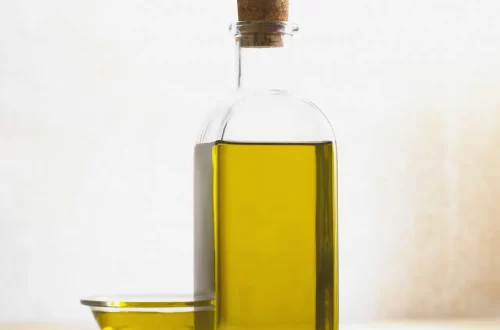
The Ultimate Guide to Choosing the Best Deadlift Socks for Performance
The right gear can make a significant difference in performance, especially in strength training. Among various pieces of equipment, socks might seem like a minor detail, but they play a crucial role, particularly in exercises like the deadlift. Deadlift socks are more than just an accessory; they provide necessary support, comfort, and safety during heavy lifts. The right pair can enhance grip, prevent injuries, and ensure that your feet remain warm and dry, allowing you to focus entirely on your performance.
When you step onto the platform for a deadlift, the last thing you want to think about is your footwear. That’s where the significance of deadlift socks comes into play. These socks are specifically designed to cater to the unique needs of lifters, facilitating optimal performance. With a range of materials, lengths, and designs, choosing the right deadlift socks can feel overwhelming. However, understanding their features and benefits can help you make an informed decision and elevate your lifting game.
Understanding the Importance of Deadlift Socks
Deadlift socks serve several purposes that extend beyond mere aesthetics. First and foremost, they provide a layer of protection for your shins during the lift. When performing deadlifts, the barbell often makes contact with your legs, which can lead to painful scrapes and bruises. Wearing socks that cover your shins can significantly reduce the risk of injury, allowing you to focus on your form and technique instead of worrying about potential abrasions.
Moreover, deadlift socks are designed to offer a snug fit, which can enhance your overall stability. A tighter fit around the ankle and calf can prevent your feet from shifting within your shoes, improving your grip on the ground. This stability is crucial for executing a successful lift, as it helps to maintain proper posture and alignment throughout the movement.
In addition to protection and stability, deadlift socks can also help regulate temperature. Lifting heavy weights can lead to increased body heat, and having moisture-wicking socks can keep your feet dry and comfortable. This helps in maintaining focus and performance, especially during longer training sessions or competitions.
Finally, the right deadlift socks can also contribute to your mental game. Many lifters find that wearing specific gear, including socks, can boost their confidence. When you feel good and well-prepared, it often translates into better performance on the platform.
Choosing the Right Material for Maximum Comfort
The material of your deadlift socks is a critical factor in determining their overall performance and comfort. Different materials offer various benefits, and understanding these can help you select the best option for your needs.
Cotton is a common material found in many socks, but it may not be the best choice for deadlifting. While it is comfortable and breathable, cotton tends to retain moisture, which can lead to blisters and discomfort during intense workouts. Instead, consider synthetic materials such as polyester or nylon. These fabrics are designed to wick moisture away from the skin, keeping your feet dry and comfortable even during the most demanding lifts.
Another popular option is merino wool. Although wool is often associated with warmth, merino wool is lightweight and breathable, making it an excellent choice for deadlift socks. It naturally regulates temperature and moisture, ensuring that your feet remain comfortable throughout your workout. Additionally, merino wool has natural antimicrobial properties, which can help to reduce odor—a bonus for those long training sessions.
Blends of materials can also be effective. Many brands offer socks that combine synthetic fibers with spandex or elastane for added stretch and support. This combination provides a snug fit without sacrificing comfort, allowing for maximum range of motion during lifts.
Ultimately, the best material for deadlift socks will depend on your personal preferences and the conditions in which you train. Consider factors such as climate, training duration, and your own comfort level to make the best choice for your needs.
Finding the Right Fit and Length
When it comes to deadlift socks, fit and length are just as important as material. The right fit ensures that the socks stay in place during your lifts and do not slip down, which can be distracting and detrimental to your performance.
Deadlift socks are typically available in various lengths, including crew, knee-high, and over-the-calf options. Knee-high socks are often the most favored choice among lifters, as they provide ample coverage and protection for the shins while also offering support for the calves. This length can also be beneficial for maintaining warmth, especially in colder training environments.
Crew socks, which reach just above the ankle, can also be a viable option for those who prefer a lighter feel and less coverage. However, they may not offer the same level of protection against barbell contact during the lift. For lifters who find themselves frequently battling shin scrapes, knee-high or over-the-calf options are recommended.
As for the fit, it’s essential to select socks that provide a snug yet comfortable fit. Socks that are too tight can restrict circulation, while those that are too loose may bunch up during your lifts, causing discomfort and distraction. Many brands offer size guides, so it’s advisable to measure your foot and consult these guides to find the perfect fit.
Finally, consider any additional features that may enhance comfort and performance. Some socks come with arch support, cushioning, or reinforced toes and heels, which can provide added durability and comfort during your training sessions.
Style and Design Considerations
While performance should always take precedence when selecting deadlift socks, style and design are also factors that many lifters consider. The right design can not only elevate your workout gear but can also affect your confidence and mindset during lifts.
Deadlift socks come in various colors, patterns, and styles, allowing you to express your personality and preferences. Some lifters prefer bold designs with bright colors, while others opt for more subdued tones. Ultimately, your choice of style should align with what makes you feel comfortable and confident during your lifts.
Branding is another aspect to consider. Many fitness brands have established reputations for producing high-quality lifting gear, and wearing socks from these brands can enhance your sense of professionalism and readiness. Additionally, some brands offer unique features in their designs, such as extra padding or compression zones that can further improve performance.
However, it’s essential to remember that while style is important, it should never come at the expense of functionality. Ensure that any socks you consider align with the performance aspects discussed earlier, such as material, fit, and length. A stylish pair of socks that fails to provide the necessary support and protection won’t do you any favors on the platform.
In conclusion, investing time in selecting the right deadlift socks can significantly impact your training experience and performance. With the right combination of material, fit, and design, you can enhance your comfort, protection, and overall lifting capabilities. Make sure to explore various options, read reviews, and consider your personal preferences to find the perfect pair that meets your unique needs.
**Disclaimer:** This article is not intended as medical advice. For any health-related concerns, please consult a qualified healthcare professional.




